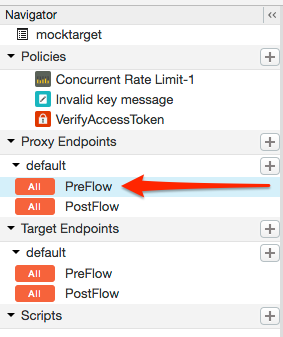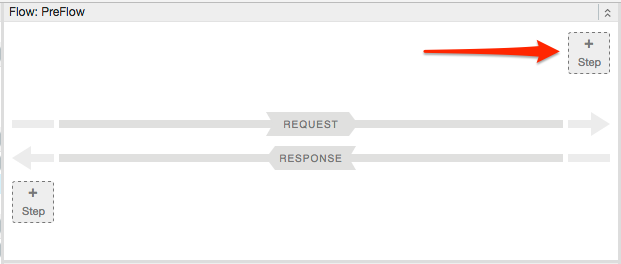This page applies to Apigee and Apigee hybrid.
View
Apigee Edge documentation.
![]()
When you call an API proxy on Apigee that has OAuth security, Apigee is responsible for verifying access tokens. Think of Apigee as the gatekeeper -- no API call can pass through that does not have an access token that can be verified.
Adding a VerifyAccessToken policy
To configure token verification, place an OAuthV2 policy with the VerifyAccessToken operation at the very beginning of the API proxy flow (the beginning of the ProxyEndpoint Preflow). If placed there, access tokens will be verified before any other processing takes place, and if a token is rejected, Apigee stops processing and returns an error back to the client.
To access the API proxies page using the Apigee UI:
Apigee in Cloud console
In the Google Cloud console, go to the Proxy development > API proxies page.
- From the list, select the proxy you wish to protect.
- In the proxy details page, click the Develop tab.
- In the navigation menu, under Proxy endpoints,
default, click PreFlow. Typically, the endpoint
you want is called default, although it is possible to
create multiple proxy endpoints. If you do have multiple endpoints,
you will probably want to follow these steps to perform token
verification on each one.

In the proxy flow editor, click Add policy step.

- In the Add policy step dialog, select Create new policy.
- From the policy list, under Security, select OAuth v2.0.
- Optionally, change the policy name and display name. For example, for better readability, you might change the Display name and Name both to VerifyAccessToken.
- Click Add.
Classic UI
- Open the Apigee UI.
- Select Develop > API Proxies in the left navigation bar.
- From the list, select the proxy you wish to protect.
- In the overview page, click the Develop tab.
- In the Navigator, select PreFlow for an endpoint listed under Proxy
Endpoints. Typically, the endpoint you want is called "default", although it is possible to
create multiple proxy endpoints. If you do have multiple endpoints, you will probably want to
follow these steps to perform token verification on each one.

- In the proxy flow editor, click + Step.

- Select Policy Instance New.
- From the policy list, select OAuth v2.0.
- Optionally, change the policy name and display name. For example, for better readability, you might change the display name and name both to "VerifyAccessToken".
- Click Add.
The default policy is already configured with the VerifyAccessToken operation, so you do not have to do anything further:
<?xml version="1.0" encoding="UTF-8" standalone="yes"?>
<OAuthV2 async="false" continueOnError="false" enabled="true" name="OAuth-v20-1">
<DisplayName>OAuth v2.0 1</DisplayName>
<FaultRules/>
<Properties/>
<Attributes/>
<ExternalAuthorization>false</ExternalAuthorization>
<Operation>VerifyAccessToken</Operation>
<SupportedGrantTypes/>
<GenerateResponse enabled="true"/>
<Tokens/>
</OAuthV2>